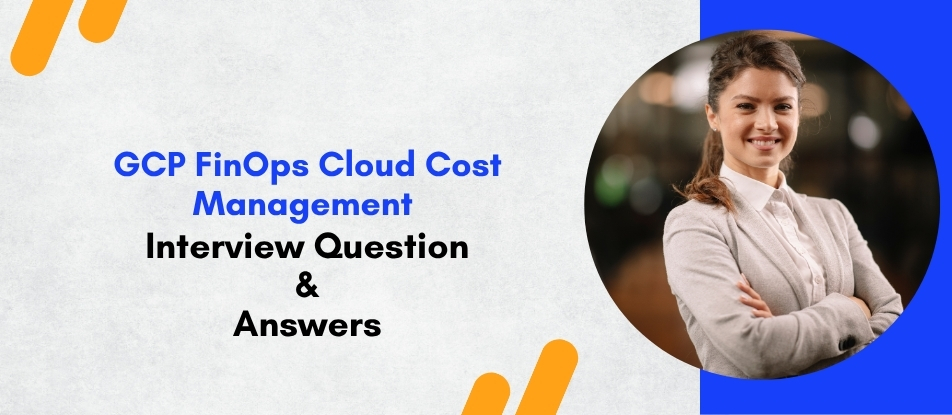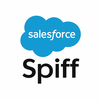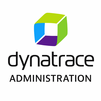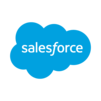
The GCP FinOps Cloud Cost Management Training is designed to help enterprises achieve financial accountability in the cloud by mastering Google Cloud Platform’s cost optimization practices. This program covers budgeting, forecasting, labeling, cost allocation, and advanced optimization with CUDs, SUDs, and automation. Learners will gain practical experience with tools like Cloud Billing, BigQuery, and Looker Studio for actionable insights. The training fosters collaboration between finance, engineering, and operations teams, ensuring efficient, transparent, and value-driven cloud operations.
GCP FinOps Cloud Cost Management Training Interview Questions Answers - For Intermediate
1. What is the significance of cost visibility in a multi-project GCP environment?
In a multi-project GCP environment, cost visibility is crucial for financial accountability and operational efficiency. Without clear visibility, it becomes challenging to determine which teams or departments are incurring costs, leading to potential overspending and lack of ownership. GCP provides tools like the Billing Reports and BigQuery exports that allow organizations to analyze costs at the project, folder, or label level. This visibility enables stakeholders to identify high-cost areas, track usage trends, and make informed decisions about resource allocation and budgeting.
2. How does GCP Pricing Calculator support FinOps practices?
The GCP Pricing Calculator is an essential pre-deployment tool that allows users to estimate costs based on expected usage of various services. It supports FinOps by helping teams forecast expenses before deploying workloads, enabling better budget planning and cost comparisons between service options. It encourages teams to design cost-aware architectures and serves as a reference point when validating actual billing against projected usage, thus minimizing surprises and supporting financial transparency.
3. What are quotas in GCP and how do they relate to cost control?
Quotas in GCP act as limits on the usage of specific services and resources to prevent accidental overuse and manage costs. These include rate quotas (requests per second) and allocation quotas (total number of resources). Setting quotas ensures that users or applications do not exceed expected usage thresholds, which helps in avoiding unexpected spikes in billing. Quotas also support governance policies and can serve as safeguards in environments with multiple users or teams.
4. Explain the purpose of the Recommendations Hub in GCP.
The Recommendations Hub in GCP offers AI-driven suggestions to optimize resources and reduce costs. It analyzes historical usage data and identifies underutilized or idle resources, such as oversized VMs, unused IP addresses, or inactive disks. By following these recommendations, organizations can make data-driven decisions to right-size infrastructure and eliminate waste, contributing to more efficient cloud spend and improved operational efficiency.
5. What is the difference between chargeback and showback models in FinOps?
In FinOps, chargeback and showback are two approaches to allocate cloud costs to internal teams. In a chargeback model, the actual costs are billed back to each team based on their usage, enforcing strict financial accountability. In a showback model, costs are reported for transparency without actual internal billing. Showback helps raise awareness of resource consumption, while chargeback incentivizes cost optimization by making teams financially responsible for their usage.
6. How can automation help reduce costs in GCP?
Automation plays a key role in reducing costs by managing resources dynamically and eliminating manual inefficiencies. With tools like Cloud Scheduler, Cloud Functions, and Deployment Manager, organizations can automate tasks such as shutting down idle VMs after hours, cleaning up temporary resources, or scheduling backups efficiently. This proactive approach ensures that resources are used only when needed, reducing wastage and improving budget adherence.
7. What are idle resources and how can they be identified in GCP?
Idle resources are components that are provisioned but not actively used, such as unattached disks, static IPs not assigned to VMs, or underutilized virtual machines. These resources continue to incur charges despite not providing value. In GCP, idle resources can be identified using the Recommendations Hub, Cloud Monitoring metrics, and custom BigQuery cost reports. Timely identification and decommissioning of such resources help significantly in cost optimization.
8. How does GKE Autopilot mode affect cloud cost management?
GKE Autopilot mode simplifies cluster management by automatically provisioning and scaling infrastructure based on workload needs. While it abstracts away much of the operational complexity, it also introduces a different pricing model where users are billed per pod rather than per node. This can help in cost predictability and efficiency for small to medium workloads, but organizations must monitor usage closely to avoid overprovisioning or unnecessary background services consuming resources.
9. What strategies can help forecast cloud spend accurately on GCP?
Accurate forecasting requires a combination of historical usage analysis, understanding of upcoming workloads, and collaboration between teams. GCP provides forecast reports and programmatic access via the Cloud Billing API and BigQuery exports, which help model future usage trends. Using consistent labels, applying budgets, and involving stakeholders in cost planning sessions are essential strategies to anticipate spending patterns and align them with financial goals.
10. How can organizations manage data egress costs effectively on GCP?
Data egress costs occur when data leaves GCP to the internet or another region. To manage these costs, organizations should minimize unnecessary transfers, use multi-region storage wisely, and leverage services like Cloud CDN and Private Google Access where appropriate. Additionally, placing services and storage in the same region or VPC can reduce internal network charges, helping to optimize data movement and lower associated costs.
11. What is the importance of anomaly detection in GCP FinOps?
Anomaly detection helps in identifying unusual spikes or drops in usage or spending that deviate from historical patterns. GCP supports anomaly detection through billing alerts, custom scripts, and integrations with third-party monitoring tools. Detecting anomalies early can prevent budget overruns, highlight security or configuration issues, and allow teams to react quickly to unexpected behavior in their cloud environments.
12. How can labels be enforced across projects in GCP for cost management purposes?
To ensure consistent label usage across projects, organizations can implement policies using tools like Organization Policy Service, Deployment Manager, or Terraform. These tools help enforce required labels during resource creation. Additionally, running periodic audits using BigQuery billing exports and Cloud Asset Inventory allows for identifying untagged or improperly tagged resources, reinforcing labeling discipline across the organization.
13. What’s the difference between billing export to BigQuery and billing reports in GCP?
Billing Reports provide a visual overview of spending patterns, trends, and comparisons over time through the Billing Console. In contrast, billing export to BigQuery offers a raw, detailed, and structured dataset of usage and cost information, allowing advanced queries, customized reporting, and integration with other data tools. BigQuery exports are better suited for complex FinOps analytics, while billing reports serve general visibility and stakeholder updates.
14. How does the GCP Cloud Billing API support programmatic cost management?
The Cloud Billing API allows developers and finance teams to access cost and usage data programmatically. It supports querying budgets, pricing information, billing accounts, and project costs. This capability is crucial for building custom dashboards, automating alerts, and integrating cost data into internal financial systems. It empowers organizations to monitor, control, and respond to cost fluctuations in real time.
15. What challenges do companies face when implementing FinOps in GCP?
Common challenges include lack of cost visibility across teams, inconsistent tagging practices, resistance to adopting financial accountability by engineering teams, and difficulty forecasting due to unpredictable workloads. Additionally, without proper tooling and automation, tracking and optimizing cloud spend can become resource-intensive. Addressing these challenges requires executive sponsorship, cultural change, robust processes, and effective use of GCP-native and third-party tools for governance.
GCP FinOps Cloud Cost Management Training Interview Questions Answers - For Advanced
1. How can organizations optimize cross-project and cross-region networking costs in GCP?
Optimizing cross-project and cross-region networking costs in GCP requires a combination of architectural planning, network design, and monitoring. Projects that exchange data across regions incur egress charges that can significantly increase the total cost of ownership. To reduce these, organizations should consider centralizing services in a single region where feasible, or leverage interconnects, Cloud VPN, or Private Google Access to reduce public data transfer costs. For internal communication, using VPC peering or Shared VPCs can minimize inter-project data transfer fees. Architecting applications to process and store data locally within the same region and minimizing unnecessary API calls between regions also reduces costs. Network cost optimization also involves monitoring traffic patterns with VPC Flow Logs and exporting them to BigQuery or Logging for granular insights, enabling further cost-cutting actions.
2. What is the significance of resource reservation vs. autoscaling from a FinOps perspective in GCP?
From a FinOps perspective, the choice between reserving resources and enabling autoscaling hinges on workload predictability and cost-efficiency. Reserved resources, such as committed use contracts, offer consistent discounts but are best suited for steady, long-running workloads. However, autoscaling provides elasticity, adjusting resource consumption based on demand, which can result in better utilization and reduced waste for variable workloads. FinOps professionals must analyze workload patterns using tools like Cloud Monitoring, Recommender, and BigQuery billing exports to determine which approach yields the best cost-to-performance balance. Often, a hybrid approach is most effective—reserving a baseline capacity using CUDs while enabling autoscaling for overflow demand ensures both cost savings and system responsiveness.
3. How does cloud cost allocation support strategic business decision-making in large enterprises using GCP?
In large enterprises, cloud cost allocation enables business units to understand the financial impact of their cloud usage, promoting accountability and strategic resource planning. Accurate allocation—whether by project, environment, team, or service—ensures transparency and helps align cloud spending with business KPIs. With this visibility, leadership can assess which teams or applications deliver the best ROI and adjust investments accordingly. Cost allocation also supports budget planning, forecasting, and vendor negotiations by providing granular insights into usage patterns. On GCP, combining billing exports, labeling, folder structures, and integration with ERP systems allows for actionable reporting that goes beyond IT metrics and supports CFO-level insights into cloud economics.
4. Discuss the role of governance policies in controlling costs in GCP.
Governance policies play a critical role in controlling cloud costs by establishing guardrails for resource provisioning, usage, and billing. In GCP, tools like Organization Policy Service, IAM roles, and Constraints allow administrators to restrict access to costly services, prevent resource misconfiguration, and enforce tagging requirements. For example, policies can block the creation of high-cost GPU instances unless approved, or disallow projects from using services outside a specified region to avoid egress charges. Governance also includes setting spending caps, budget alerts, and approval workflows for provisioning. These policies ensure consistency, reduce human error, and provide accountability, especially in decentralized environments where multiple teams deploy independently.
5. What challenges arise when implementing showback models in GCP and how can they be mitigated?
Implementing showback models in GCP—where costs are reported to internal teams without charging them directly—presents challenges such as lack of accountability, inconsistent tagging, and difficulty attributing shared resources. Without real financial consequences, teams may ignore usage reports, leading to continued inefficiency. Additionally, shared resources like networking, IAM, or logging infrastructure are hard to allocate fairly. These challenges can be mitigated by enforcing consistent labeling at deployment time, using advanced cost allocation strategies (e.g., weight-based distribution for shared services), and pairing showbacks with education and transparency initiatives. Gradually transitioning from showback to chargeback models once reporting is mature can also help instill cost ownership.
6. How can cost optimization be embedded into CI/CD pipelines in GCP environments?
To embed cost optimization into CI/CD pipelines, organizations can integrate cost checks and validations into the build and deploy phases. For example, infrastructure code (Terraform or Deployment Manager) can include cost estimation scripts or hooks that compare planned resources against defined thresholds. Policies can automatically flag or block deployments that exceed cost budgets. Additionally, test environments spun up during CI can be configured to self-destruct after test completion using automation tools like Cloud Scheduler, Cloud Functions, or Workload Identity Federation. Logs, budgets, and metrics from each deployment can be exported and analyzed post-release to track cost per feature or release. This "shift-left" approach ensures that cost awareness becomes part of the developer workflow.
7. What is the importance of anomaly detection and root cause analysis in GCP FinOps practices?
Anomaly detection allows teams to identify unexpected spending patterns or spikes, which is crucial in cloud environments where resource consumption can fluctuate rapidly. GCP supports this via budget forecast alerts, machine learning-based anomaly detection through Vertex AI, and integrations with third-party tools. Once anomalies are detected, root cause analysis (RCA) is essential to pinpoint the specific resources, services, or users responsible. For example, a sudden spike in egress costs might be traced back to an unintended data transfer across regions due to a misconfigured load balancer. Automated alerts tied to BigQuery billing data or logging events can assist in early RCA, preventing long-term overspending. Incorporating these practices into FinOps processes ensures fast mitigation and promotes financial control.
8. How can Cloud Asset Inventory assist in FinOps operations and cost accountability?
Cloud Asset Inventory provides a real-time and historical inventory of GCP resources, including metadata like labels, resource type, region, and IAM policies. For FinOps teams, this tool is invaluable in validating resource ownership, ensuring compliance with tagging strategies, and detecting unused or orphaned resources. It supports integration with BigQuery, allowing cost attribution queries to be enriched with asset context. For instance, it can help identify which untagged persistent disks are not attached to any VM but are still incurring costs. By continuously syncing asset inventory with billing data, organizations can maintain up-to-date resource visibility and accountability across teams and projects.
9. Explain the concept of cloud unit economics and how GCP FinOps supports this approach.
Cloud unit economics refers to measuring cloud costs in terms of specific business or technical outputs—such as cost per API request, cost per customer, or cost per GB processed. This model helps tie cloud spending directly to value creation. GCP FinOps supports this approach through granular billing exports, labels, and usage metrics that can be aligned with product KPIs. For example, billing data can be enriched with customer IDs or usage metrics to determine profitability per feature or customer segment. This analysis guides pricing strategies, product investments, and operational scaling. Achieving accurate unit economics requires advanced tagging, integrated data pipelines, and strong collaboration between product, finance, and engineering teams.
10. What strategies can be used to manage ephemeral workloads in GCP from a FinOps perspective?
Managing ephemeral workloads such as batch jobs, data processing pipelines, or test environments requires strategies that align resource allocation with short-lived usage patterns. FinOps teams should encourage the use of Preemptible VMs, Cloud Run, or Dataflow for such workloads to benefit from usage-based or discounted pricing models. Automation is key—scheduling jobs to run during low-traffic windows or triggering them via events ensures resources are not kept idle. Cost monitoring should focus on runtime duration, scaling thresholds, and data transfer patterns. Implementing alerts when jobs exceed expected runtime or cost budgets further supports proactive cost control. These strategies ensure ephemeral workloads remain efficient and cost-aligned.
11. How does data classification influence storage cost optimization in GCP?
Data classification involves categorizing data based on its access frequency, sensitivity, and business value, which directly influences how it should be stored and managed. GCP offers multiple storage classes—Standard, Nearline, Coldline, and Archive—each with different pricing for storage and retrieval. Classifying data appropriately ensures that frequently accessed data remains performant, while infrequently accessed data is moved to lower-cost tiers. Tools like Storage Lifecycle Management can automate transitions between tiers based on access patterns. Integrating classification policies with tagging and monitoring tools allows FinOps teams to continuously review and adjust storage usage, balancing cost with performance and compliance requirements.
12. How do Reserved Instances and CUDs compare with Spot VMs from a cost and reliability standpoint in GCP?
Reserved Instances (RIs) and Committed Use Discounts (CUDs) offer predictable discounts for long-term workloads by committing to fixed usage levels. They are ideal for stable, always-on services. Spot VMs (formerly preemptible VMs), on the other hand, offer deep discounts—up to 90%—but can be terminated by GCP with little warning, making them suitable only for fault-tolerant or short-duration tasks like CI pipelines or data processing jobs. FinOps teams must balance these trade-offs: CUDs offer predictability, while Spot VMs provide flexibility and extreme savings. Advanced FinOps practices involve using policy engines or job schedulers to dynamically route appropriate workloads to each pricing model based on cost sensitivity and workload criticality.
13. What are the considerations for managing inter-departmental budgets in GCP FinOps?
Managing budgets across departments requires visibility, transparency, and policy enforcement. Each department should be assigned its own GCP projects or folders with associated budgets and quotas. Regular cost reviews with department leads ensure that variances are identified early. Setting up automated alerts, forecast dashboards, and monthly usage reports helps departments track their spending in near real-time. Considerations include handling shared resources, establishing fair cost distribution mechanisms, and ensuring consistency in tagging. An internal SLA or agreement may be created to define accountability, escalation paths, and variance thresholds. Collaboration between FinOps, finance, and department stakeholders is key to ensuring smooth budget adherence.
14. How does Looker (formerly Data Studio) enhance FinOps reporting for GCP users?
Looker enables FinOps teams to create interactive, real-time dashboards by connecting to data sources like BigQuery billing exports. It allows users to visualize costs by project, label, service, or time window, with drill-down capabilities for RCA. Compared to static reports, Looker supports collaborative analysis, trend forecasting, and alerts via embedded charts or Google Workspace. It enables the creation of executive-level summaries and engineering-focused views in the same platform. FinOps teams can share these dashboards with stakeholders to support monthly cost reviews, anomaly detection, and optimization tracking, turning cost management into a transparent, organization-wide effort.
15. What cultural shifts are necessary to fully implement FinOps in a GCP-centric organization?
Implementing FinOps requires cultural shifts across engineering, finance, and executive teams. Engineers must move beyond performance-focused mindsets and consider cost as part of design and deployment. Finance teams must understand the nuances of cloud billing and usage models. Executives must support a shared responsibility model, where accountability is distributed, and decisions are made collaboratively. FinOps champions or cloud cost analysts can help bridge gaps by facilitating education, building dashboards, and running optimization reviews. Incentives should reward cost-saving behavior, and cost efficiency should become a KPI. Without these cultural changes, even the best tools and strategies will not deliver lasting financial discipline in the cloud.
Course Schedule
| Nov, 2025 | Weekdays | Mon-Fri | Enquire Now |
| Weekend | Sat-Sun | Enquire Now | |
| Dec, 2025 | Weekdays | Mon-Fri | Enquire Now |
| Weekend | Sat-Sun | Enquire Now |
Related Courses
Related Articles
- Enhance Skills with Primavera P6 Fundamentals Rel 19 Course
- Best Way to Learn Microsoft Cloud Computing Online
- A Complete Guide to SAP Extended Warehouse Management (EWM) for Modern Enterprises
- Security and Compliance with IBM Websphere Transformation Extender - Essentials
- SAP Online Training & Certification Courses
Related Interview
Related FAQ's
- Instructor-led Live Online Interactive Training
- Project Based Customized Learning
- Fast Track Training Program
- Self-paced learning
- In one-on-one training, you have the flexibility to choose the days, timings, and duration according to your preferences.
- We create a personalized training calendar based on your chosen schedule.
- Complete Live Online Interactive Training of the Course
- After Training Recorded Videos
- Session-wise Learning Material and notes for lifetime
- Practical & Assignments exercises
- Global Course Completion Certificate
- 24x7 after Training Support











 Join our Live Instructor-Led online classes delivered by industry experts
Join our Live Instructor-Led online classes delivered by industry experts